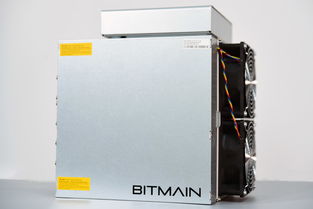The siren call of cryptocurrency mining, with its promises of digital gold, has echoed through server farms and makeshift basements alike. But the landscape is shifting. The low-hanging fruit of early Bitcoin days is gone, replaced by a competitive landscape demanding not just computational power, but strategic thinking and, increasingly, a commitment to sustainability. Optimizing profit now hinges inextricably on embracing green practices, a move no longer just ethically sound, but economically imperative.
The energy-intensive nature of mining, particularly for proof-of-work cryptocurrencies like Bitcoin, has drawn considerable scrutiny. Headlines scream of carbon footprints rivaling small nations, and regulatory pressures are mounting. Ignoring these warnings is akin to building a house on sand; a future reckoning is inevitable. Think of it this way: energy consumption directly impacts profitability. Lower energy costs translate to higher margins. Therefore, reducing energy consumption through greener alternatives is not just altruistic; it’s smart business. Consider also the growing consumer and investor demand for environmentally responsible projects. Attracting capital and customers will become increasingly difficult for operations stubbornly clinging to outdated, unsustainable practices.
So, how does one navigate this new terrain? The first step is a thorough energy audit. Understand where your power is going. Identify inefficiencies. Is your cooling system optimized? Are your mining rigs running at peak efficiency? Explore alternative energy sources. Solar, wind, and geothermal power offer attractive long-term solutions, especially in locations with favorable geographical conditions. The initial investment can be significant, but the long-term cost savings and environmental benefits are undeniable. Furthermore, explore partnerships with renewable energy providers. Many companies offer customized solutions for energy-intensive industries, including cryptocurrency mining.
Beyond energy sourcing, hardware efficiency is paramount. The latest generation of mining ASICs (Application-Specific Integrated Circuits) boasts significantly improved hash rates per watt. While upgrading can be a substantial upfront cost, the long-term gains in energy efficiency often outweigh the initial investment. Rigorous monitoring and maintenance are crucial. Overclocking can boost performance, but it also increases energy consumption and heat generation. Find the optimal balance between performance and efficiency. Regularly inspect and clean your mining rigs to ensure optimal airflow and prevent overheating.

Another strategy involves exploring alternative consensus mechanisms. Proof-of-Stake (PoS) cryptocurrencies, like Ethereum (after its transition), require significantly less energy than Proof-of-Work (PoW) coins. Staking, rather than mining, becomes the validation method, drastically reducing the computational demands. While a complete shift away from PoW may not be feasible or desirable for all cryptocurrencies, diversifying into PoS coins can significantly reduce your overall energy footprint. Furthermore, research emerging consensus mechanisms that offer even greater energy efficiency.
The location of your mining operation also plays a crucial role. Consider relocating to regions with abundant and affordable renewable energy sources. Some countries offer tax incentives or subsidies for green energy projects, making them particularly attractive. Explore the possibility of setting up operations in colder climates, where natural cooling can reduce the need for energy-intensive cooling systems. Furthermore, consider the regulatory environment. Some jurisdictions are becoming increasingly hostile to energy-intensive mining operations, while others are actively promoting sustainable practices.
Beyond the technical aspects, fostering a culture of sustainability within your organization is essential. Educate your employees about the importance of green practices. Encourage them to identify opportunities for improvement. Transparency is key. Be open about your energy consumption and your efforts to reduce it. Publish regular reports on your sustainability initiatives. This will build trust with investors, customers, and the wider community. Embrace circular economy principles. Recycle electronic waste responsibly. Explore opportunities to repurpose excess heat generated by your mining rigs.
The future of cryptocurrency mining is undoubtedly green. Those who embrace sustainable practices will not only reduce their environmental impact but also gain a competitive advantage. By optimizing energy sourcing, improving hardware efficiency, exploring alternative consensus mechanisms, and fostering a culture of sustainability, you can unlock greater profitability while contributing to a more sustainable future for the cryptocurrency industry.
Finally, consider the role of mining pools. Joining a pool allows you to combine your computational power with other miners, increasing your chances of finding a block and earning rewards. However, not all mining pools are created equal. Choose a pool that prioritizes sustainability. Some pools actively support renewable energy projects or donate a portion of their earnings to environmental charities. By supporting these pools, you can further reduce your environmental impact and contribute to a more sustainable cryptocurrency ecosystem.

The transition to sustainable crypto mining requires a multifaceted approach, demanding innovation, investment, and a genuine commitment to environmental responsibility. However, the rewards are substantial. Not only will you reduce your carbon footprint and contribute to a more sustainable future, but you will also enhance your profitability, attract investors, and build a stronger, more resilient business. The time to go green is now.
Leave a Reply